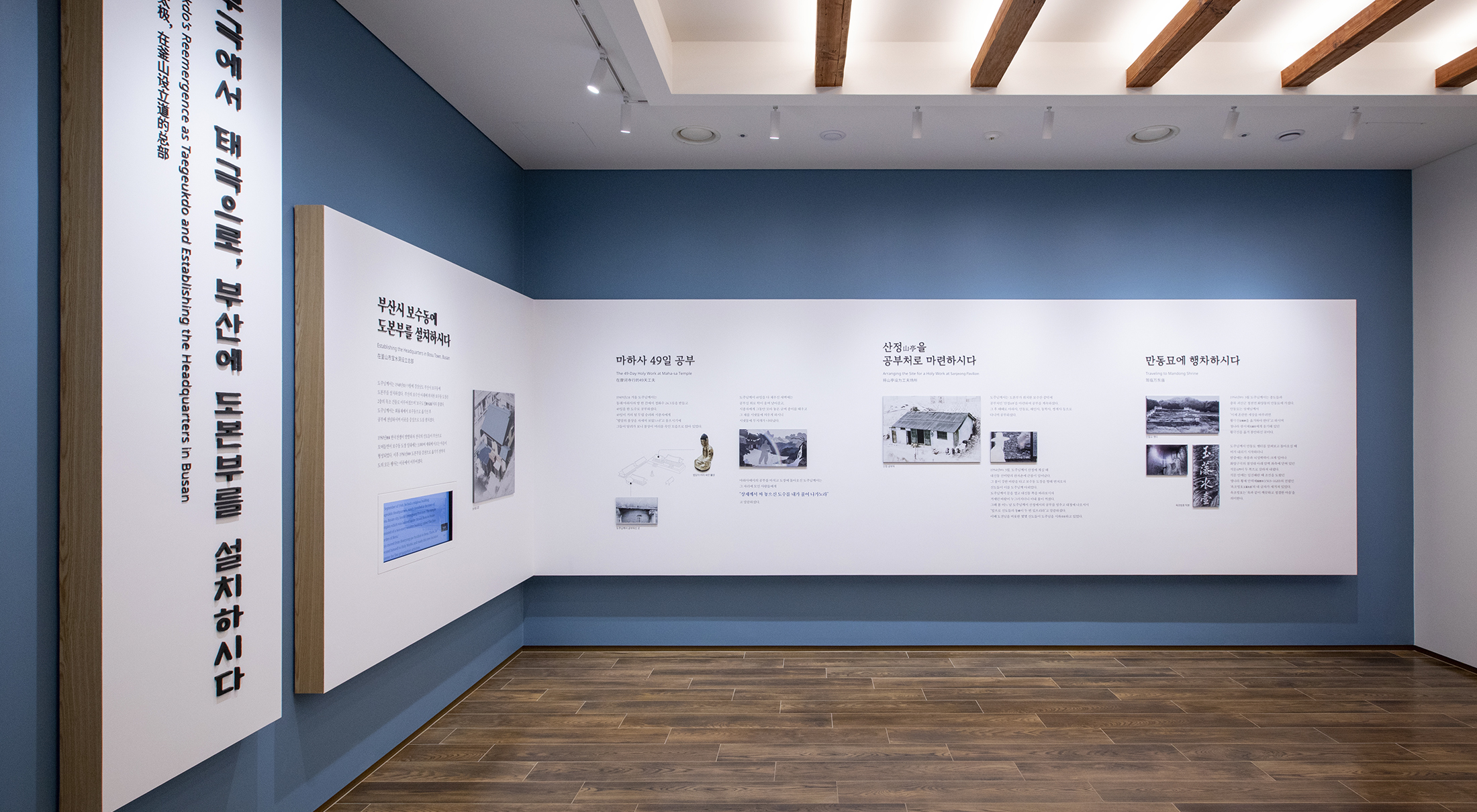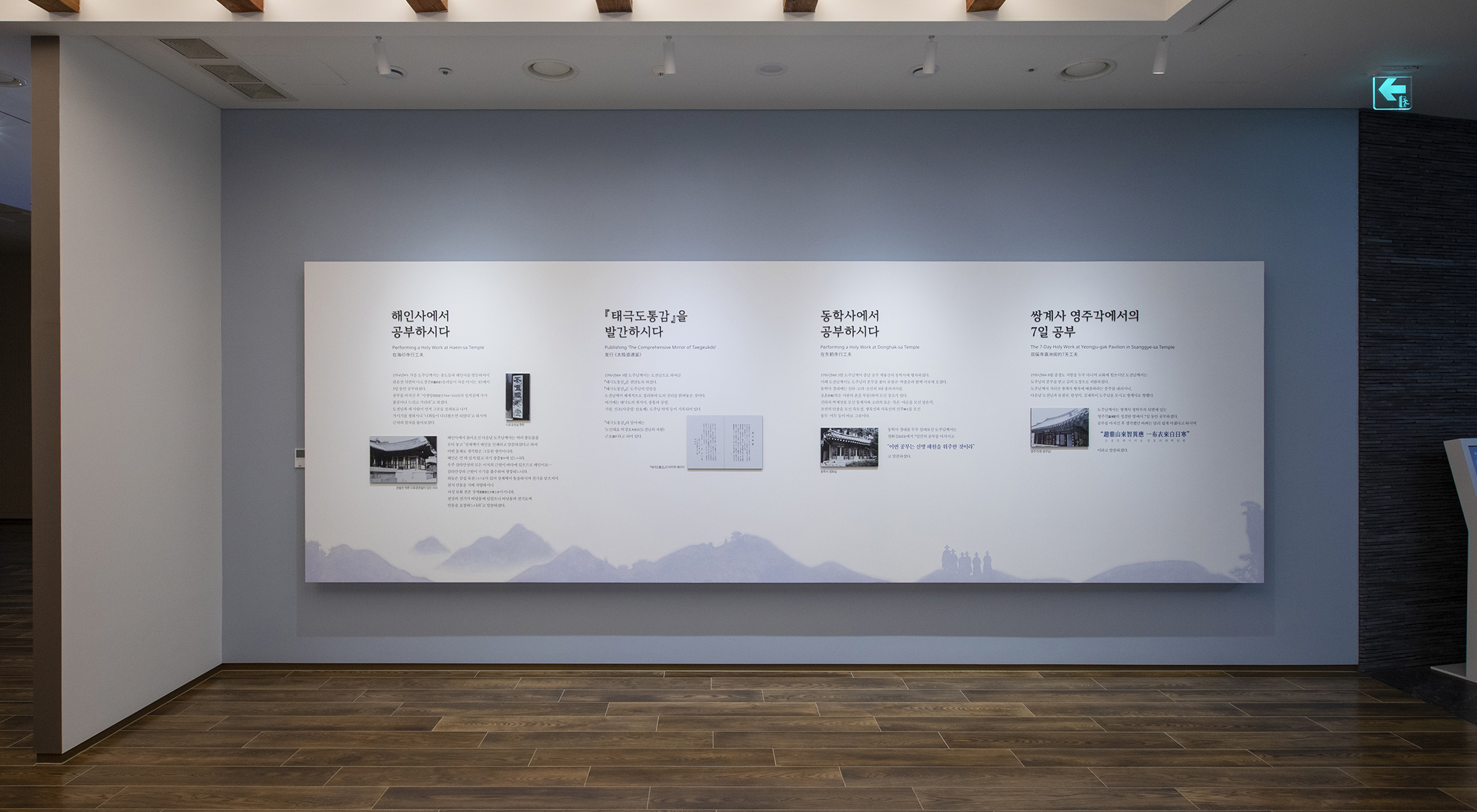The Completion of
the 50-Year Holy Work
-
Establishing the Dao Headquarters in Bosu Town, Busan
In the 9th lunar month of the Muja Year (1948),
Doju established the Dao Headquarters in the town of Bosu, Busan city,
South Gyeongsang Province.
The temple complex, situated under Mount Bosu in Busan,
consisted of a two-story wooden building known as ‘Bosudojeong (the Dao Garden of Bosu).’
Doju relocated from Hoeryong-jae Pavilion to Bosu,
where he dedicated himself to Holy Works
and began to spread the Dao centering around this new location.
When the Korean War broke out in 1950,
devotees from all over the country flocked to Busan.
About 3,000 households came together to form a village around the Bosu Temple Complex.
All of the order’s events were held at that location until 1956
when the Dao Headquarters was relocated to the town of Gamcheon.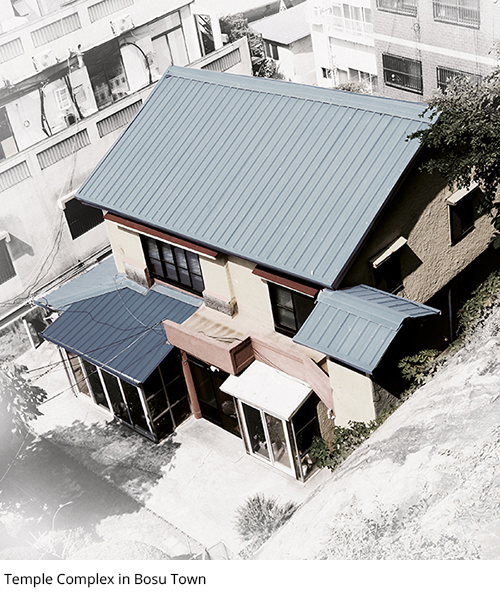
-
The 49-Day Holy Work at Maha-sa Temple
In the winter of the Gichuk Year (1949),At dawn, as Doju finished the 49 days of Holy Works, a crane flew over his room singing.
Doju engaged in a Holy Work within a room at Maha-sa Temple in Dongrae County.
During this time, he placed 24 bowls of fresh well water in front of himself and
dedicated 49 days to this practice as one Degree Number.
Towards the end of the 49-day period,
Doju posed a question to the monks and an attendant, asking,
“Have you closely examined the icon of Shakyamuni Buddha in the sanctuary?”
Prompted by his inquiry,
they hurried to the sanctuary and witnessed the statue bowing its head.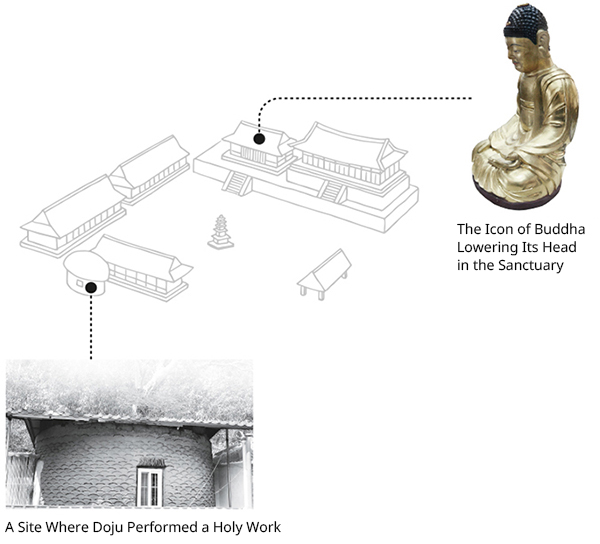
He instructed the attendant to burn the sheets of paper on which he had written
during the Holy Works and release the ashes onto the stream.
As the attendant followed his instructions, a rainbow formed over the stream.
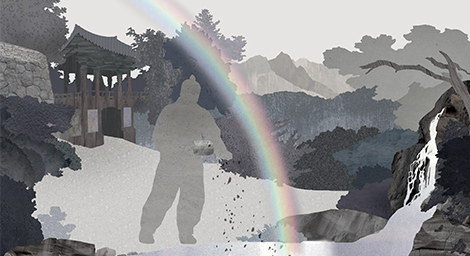
After completing the Degree Number at Maha-sa Temple,
Doju returned to the headquarters temple in Bosu Town, Busan,
where a group of individuals had gathered.
He addressed them, stating,
“I am actualizing the Degree Number that Sangje set.” -
Arranging the Site for a Holy Work
at Sanjeong Pavilion
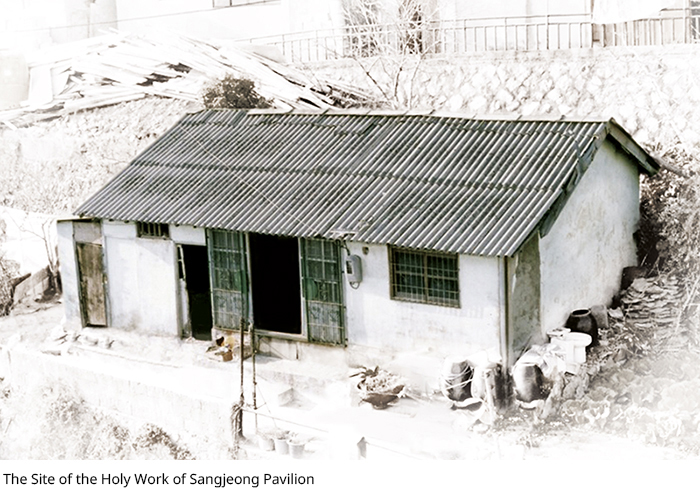 Doju continued to conduct the Holy Works
Doju continued to conduct the Holy Works
by establishing a practice site at ‘Sanjeong Pavilion’
located in the middle of Mount Bosu
where the Dao Headquarters was located.
Afterwards, he visited various sites including Maha-sa Temple,
Mandong Shrine, Haein-sa Temple, Donghak-sa Temple,
and Ssanggye-sa Temple for specific Holy Works.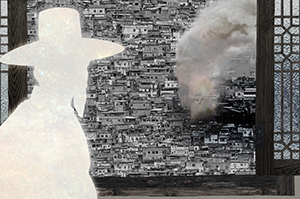 In the 3rd lunar month of the Gabo Year (1954), Doju was staying in Sanjeong Pavilion.
In the 3rd lunar month of the Gabo Year (1954), Doju was staying in Sanjeong Pavilion.
During the time, a shantytown situated on the mountain slope of Daesin Town
was struck by a large-scale fire.
The disciples promptly informed Doju as strong winds carried the blaze
towards the temple in Bosu Town.
Subsequently, he opened the door and gazed towards Daesin Town.
Miraculously, the fierce wind subsided, and the fire rapidly extinguished.
On a spring day during that year,
Doju took a break from his Holy Works at the pavilion and stepped out onto the floor.
He was then that he proclaimed,
“From this time onwards, there will be two migrations of believers.”
At that moment, some believers, including Dojeon, attended to him. -
Traveling to Mandong Shrine
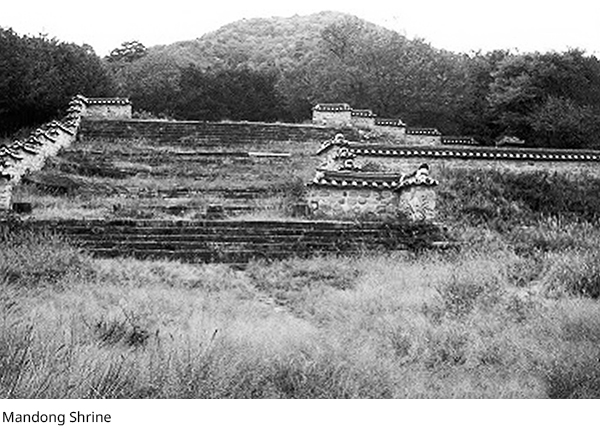 In the 3rd lunar month of the Gabo Year (1954),
In the 3rd lunar month of the Gabo Year (1954),
Doju and his disciples visited Mandong Shrine in Hwayang Town,
Cheongcheon Township, Geosan County, North Chungcheong Province.
Mandong Shrine was the place where Sangje transferred and enshrined
the god of the Imperial Ultimate (Hwanggeuk).
This deity was previously residing in Emperor Guangxu (1871-1908)
of the Qing Dynasty.
At the time of the transfer, Sangje said “The god of the Imperial Ultimate
should be brought here in order to rectify this chaotic world.”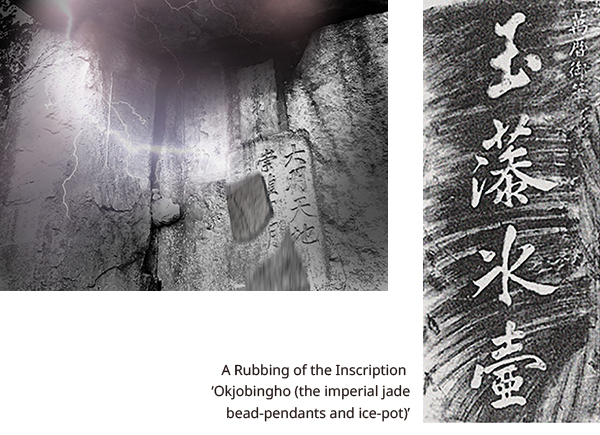 When Doju was on his way back from Mandong Shrine,
When Doju was on his way back from Mandong Shrine,
it started raining, and after night fell,
a great thunderbolt was heard and a storm erupted.
At that time, a closed stone tablet on the left side of the lower rock wall
under the Cheomseong-dae Crag (Observatory Crag)
of Hwayanggugok Valley was split into two pieces and fell down.
Within the cracked tablet, there was a carving of Emperor
Wanli’s (1563-1620) handwritten calligraphy,
‘Okjobingho (玉藻氷壺, the imperial jade bead-pendants and ice-pot).’
Okjobingho metaphorically describes
‘a clear and pristine mind which is like pure jade.’
-
Performing a Holy Work at Haein-sa Temple
In autumn of the Gabo Year (1954), Doju practiced Holy Works for three days
in the Room for Tea and Scriptures (Darogyeonggwon)
located behind the Shrine of the Goddess of Mercy (Gwaneum-jeon)
of Haein-sa Temple. He was then accompanied by some of his disciples.
After finishing the Holy Works, he told them,
“Before leaving, I will go to the room where Venerable Samyeongdang (1544-1610)
entered nirvana and offer a prostration.”
After Dojeon and three others looked around the room beforehand,
they asked Doju to go there.
Then Doju responded, “It is enough that you have looked around there.”
Instead, he looked around some other Buddhist huts nearby.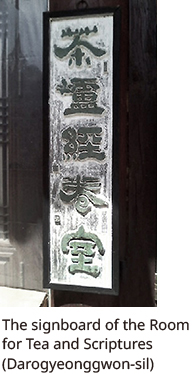
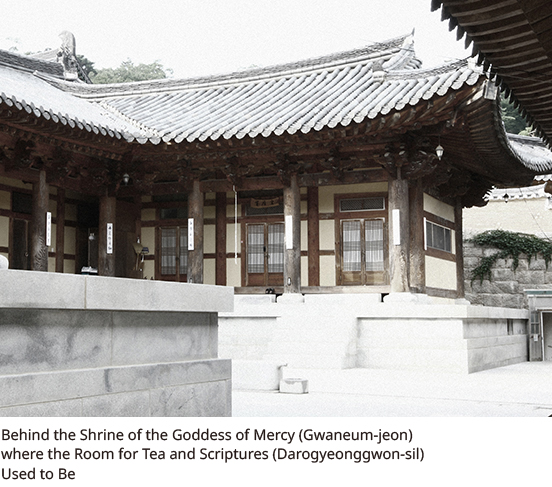 The day after Doju returned from Haein-sa Temple (Ocean Seal Temple),
The day after Doju returned from Haein-sa Temple (Ocean Seal Temple),
he gathered many disciples and said,
“Even though Sangje defined Haein (the Ocean Seal) as a seal,
it is wrong to take it as a tangible object.
The Ocean Seal is not far but close at hand.
The origin of the principles of all things in the universe lies in the ocean.
Hence, it is called the Ocean Seal...
All things in the universe are generated and grow by absorbing the energy of water.
There are 36 Heavens in the sky, which Sangje governs.
He presides over electricity to rule and nurture all nature in Heaven and Earth.
He is, accordingly, Noeseong Bohwa Cheonjon Sangje (the Supreme God,
the Celestial Worthy of Universal Creation through His Thunderbolt).
Since the electricity of Heaven is in the ocean water,
all things are surrounded by electricity.”
-
Publishing ‘The Comprehensive Mirror of Taegeukdo’
In the 3rd lunar month of the Byeongshin Year (1956),
Doju instructed Dojeon to compile
‘The Comprehensive Mirror of Taegeukdo
(Taegeukdo-tonggam).’
This work systematically organized Doju’s teachings
to reveal the truth of the Dao.
The contents included the purpose of Taegeukdo,
its Orthodox Religious Lineage, cardinal mottos, origin,
creeds (the Four Cardinal Mottos and the Three Essential
Attitudes), personal records on Doju,
and other related materials.
At the end of The Comprehensive Mirror of Taegeukdo
(Taegeukdo-tonggam), the following signature appears:
‘Reverently compiled by the representative
of the Dao cohorts, Park Gyeong-Ho (Dojeon’s courtesy name) and others.’
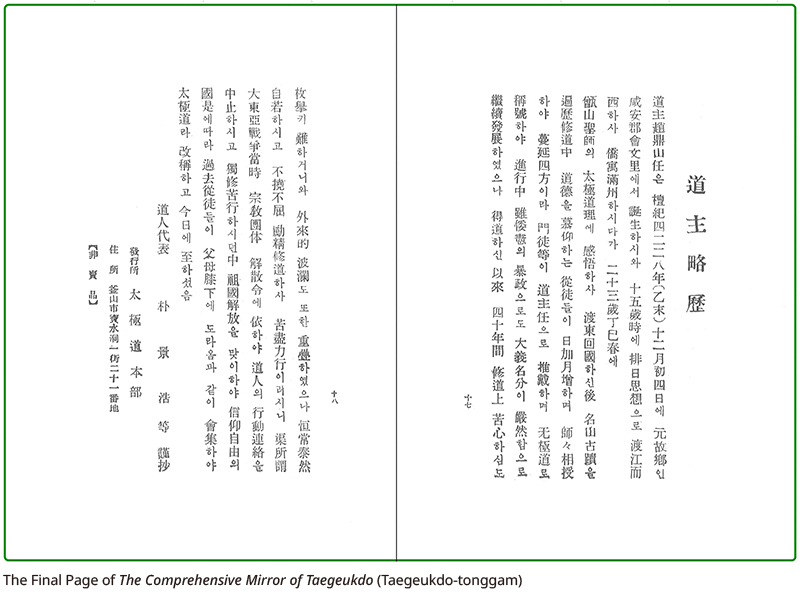
-
Performing a Holy Work at Donghak-sa Temple
In the 3rd lunar month of the Byeongshin Year (1956),
Doju visited Donghak-sa Temple in Gyeryong Mountain, Gongju County, South Chungcheong Province.
Dojeon, along with Ryu Cheol-Gyu and Park Jong-Sun, attended to Doju as ordered.
This temple is where the spirits of loyal men from the three dynasties
of Silla, Goryeo, and Joseon were invoked and enshrined.
The precincts of this temple house Donggye-sa, where Park Je-Sang of Silla is enshrined,
Sameun-gak, where Poeun, Mokeun and Yaeun of Goryeo are enshrined,
and Sukmo-jeon, where King Danjong of Joseon is enshrined.
The East Shrine and the West Shrine are two other shrines on the site,
where Saengyuksin (the Six Loyal Subjects) and Sayuksin (the Six Martyred Subjects)
are venerated respectively.
-
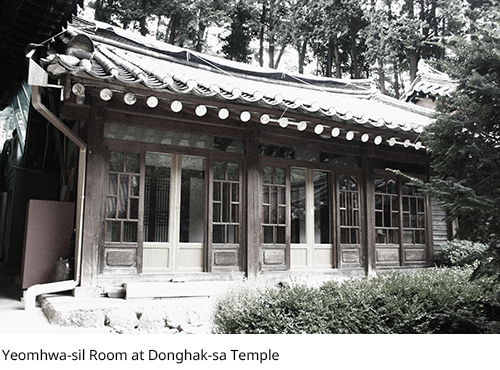 Doju surveyed the precincts of Donghak-sa Temple
Doju surveyed the precincts of Donghak-sa Temple
and completed a seven-day Holy Work in Yeomhwa-sil room.
And then, he remarked,
“This Holy Work was mainly conducted
to resolve grudges and grievances of spirits.”
-
The 7-Day Holy Work at Yeongju-gak Pavilion in Ssanggye-sa Temple
In the 8th lunar month of the Byeongshin Year (1956),
Dojeon was devotedly edifying people while traveling to various places in Chungcheong.
Suddenly, he was ordered to return to the temple headquarters as soon as possible.
After returning, Doju then ordered Dojeon to accompany him
to Ssanggye-sa Temple in Jiri Mountain, and the the next day,
Ryu Cheol-Gyu, Han Sang-Deok, and Kim Jae-Bok joined them on the journey. -
 Doju selected a clean room inside Yeongju-gak Pavilion,
Doju selected a clean room inside Yeongju-gak Pavilion,
located behind Cheonghak-ru Pavilion of Ssanggye-sa Temple.
After finishing his Holy Works, which took seven days,
Doju remarked that this Holy Work was completed
more easily than he had expected.
He added,
“As Jo Jeongsan comes,
Jiri Mountain greets him.
When the one who puts on a layer of hemp clothes comes,
the daytime sun will be cold.”
The Completion of
the 50-Year Holy Work
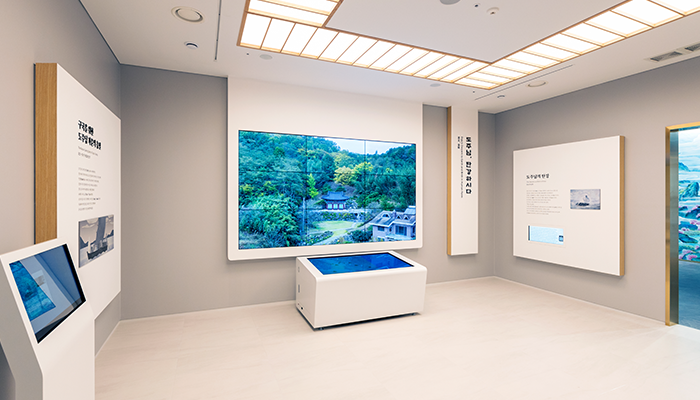
1Doju’s Descent and Birth
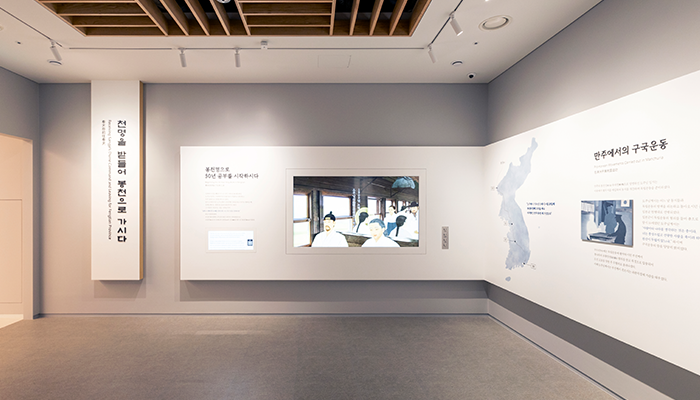
2Receiving Sangje’s Divine Command and Leaving for Fengtian Province
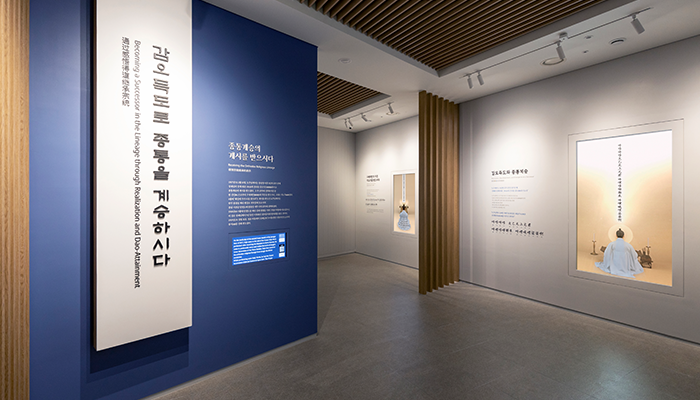
3Becoming a Successor in the Lineage through Realization and Dao-Attainment

4Following Divine Revelation by Returning to Korea and Laying a New Groundwork
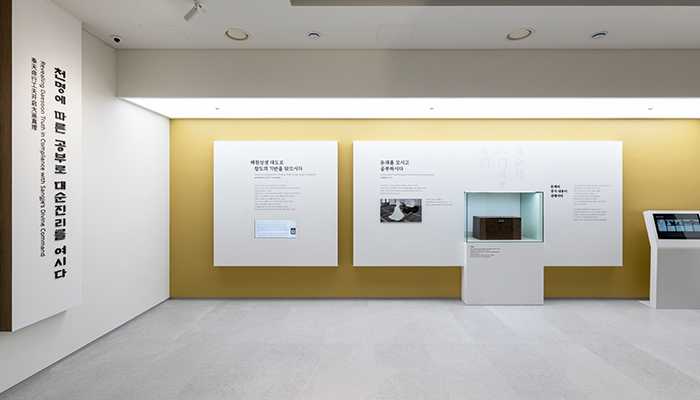
5Revealing the Daesoon Truth in Compliance with Sangje’s Divine Command
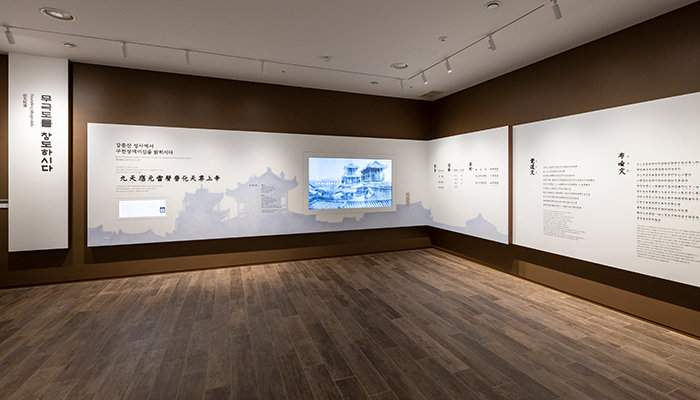
6Founding Mugeukdo
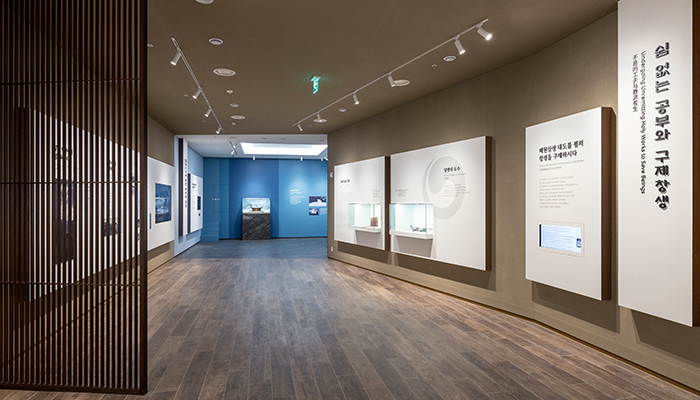
7Undergoing Unremitting Holy Works to Save Beings
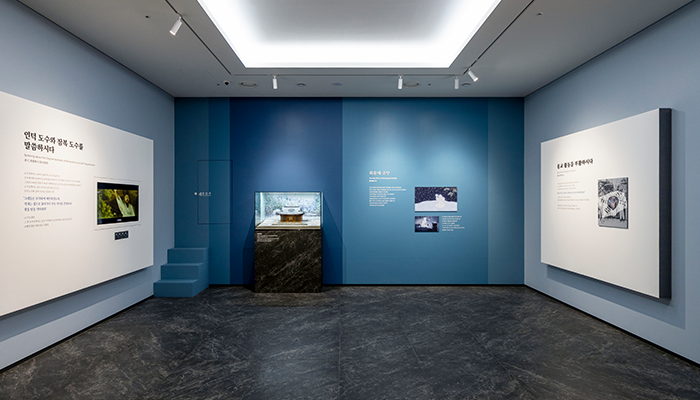
8The Holy Work at Hoeryong-jae Pavilion
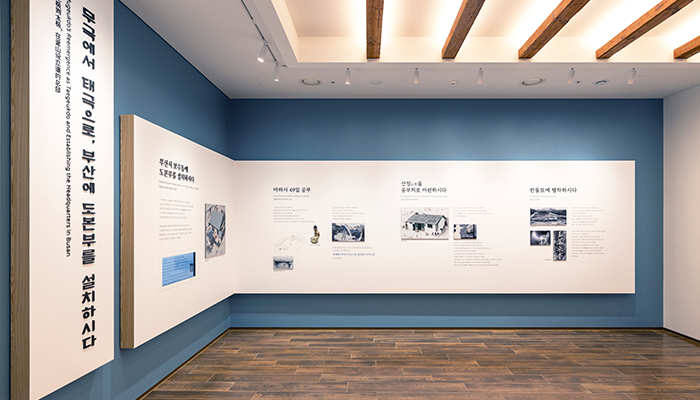
9Mugeukdo’s Reemergence as Taegeukdo and Establishing the Headquarters in Busan
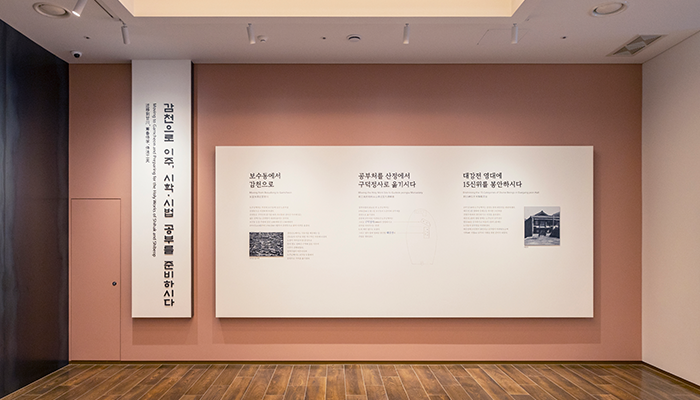
10Moving to Gamcheon and Preparing for the Holy Works of Shihak and Shibeop
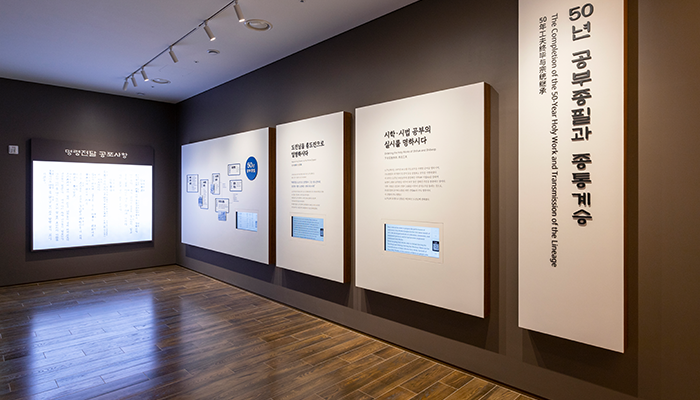
11The Completion of the 50-Year Holy Work and Transmission of the Lineage

